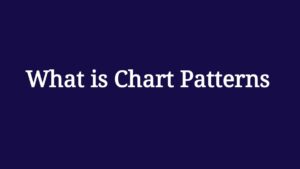Candlestick patterns are formations created by the price movements of an asset, depicted through individual candlesticks on a chart. Each candlestick represents price action over a specific period, typically showing the open, high, low, and close prices. Here’s an in-depth look at candlestick patterns:
Structure of a Candlestick
- Body: The thick part of the candlestick that shows the opening and closing prices. A green (or white) body indicates a closing price higher than the opening price (bullish), while a red (or black) body indicates a closing price lower than the opening price (bearish).
- Wicks (Shadows): The lines extending from the body represent the highest and lowest prices during the period. The upper wick shows the high, while the lower wick shows the low.
Types of Candlestick Patterns
Single Candlestick Patterns
- Doji: Indicates indecision in the market. The open and close prices are nearly the same, resulting in a small body. A doji can signal a potential reversal, especially after a trend.
- Hammer: A bullish reversal pattern found at the bottom of a downtrend. It has a small body at the top and a long lower wick, indicating rejection of lower prices.
- Shooting Star: A bearish reversal pattern appearing at the top of an uptrend. It has a small body at the bottom and a long upper wick, suggesting rejection of higher prices.
- Engulfing Patterns:
- Bullish Engulfing: A small bearish candle followed by a larger bullish candle that completely engulfs the first. Indicates potential reversal to the upside.
- Bearish Engulfing: A small bullish candle followed by a larger bearish candle that engulfs the first. Suggests a potential reversal to the downside.
Multiple Candlestick Patterns
- Morning Star: A three-candle pattern signaling a bullish reversal. It consists of a bearish candle, a small-bodied candle (doji or spinning top), followed by a bullish candle.
- Evening Star: A bearish reversal pattern, the opposite of the morning star, consisting of a bullish candle, a small-bodied candle, and a bearish candle.
- Three White Soldiers: A bullish pattern formed by three consecutive long-bodied bullish candles, indicating strong buying pressure.
- Three Black Crows: A bearish pattern consisting of three consecutive long-bodied bearish candles, indicating strong selling pressure.
How to Trade Candlestick Patterns
- Identify the Pattern: Look for recognizable formations in the candlestick chart that align with historical price movements.
- Confirmation: Wait for confirmation with subsequent price action. For example, after a bullish engulfing pattern, a follow-up bullish candle adds credibility to the signal.
- Set Entry and Exit Points: Define your entry point (e.g., after confirmation of the pattern), stop-loss level (to manage risk), and profit target based on the pattern’s context.
- Consider Context: Analyze the overall trend and combine candlestick patterns with other indicators (e.g., support and resistance, moving averages) for more robust trading decisions.
Limitations
- False Signals: Not all candlestick patterns lead to expected outcomes; false breakouts can occur.
- Subjectivity: Different traders might interpret patterns differently, which can lead to varied trading decisions.
- Market Conditions: Sudden news events or volatility can affect the reliability of patterns.
Conclusion
Candlestick patterns are powerful tools for traders, providing insights into market sentiment and potential price movements. By understanding their formation and implications, traders can enhance their strategies and improve decision-making in the markets.



